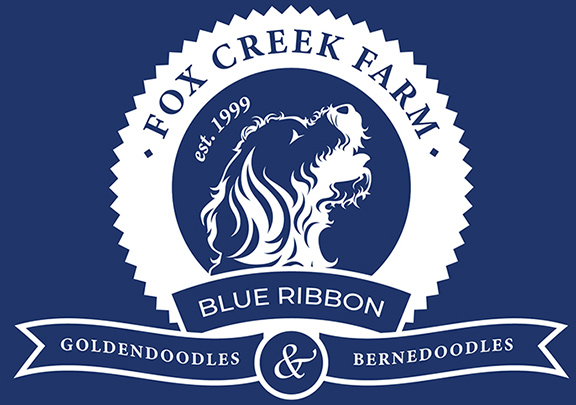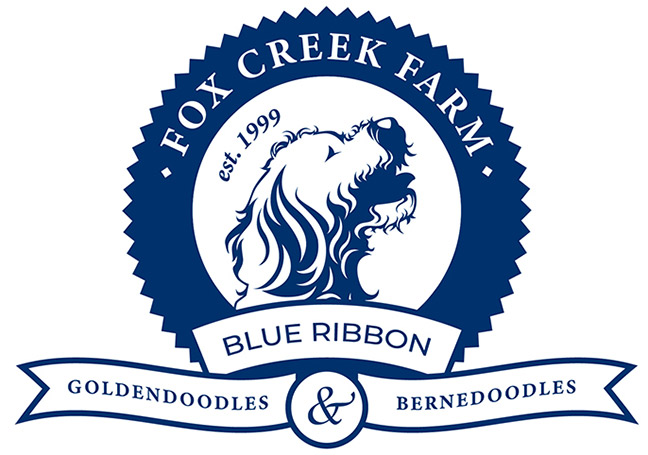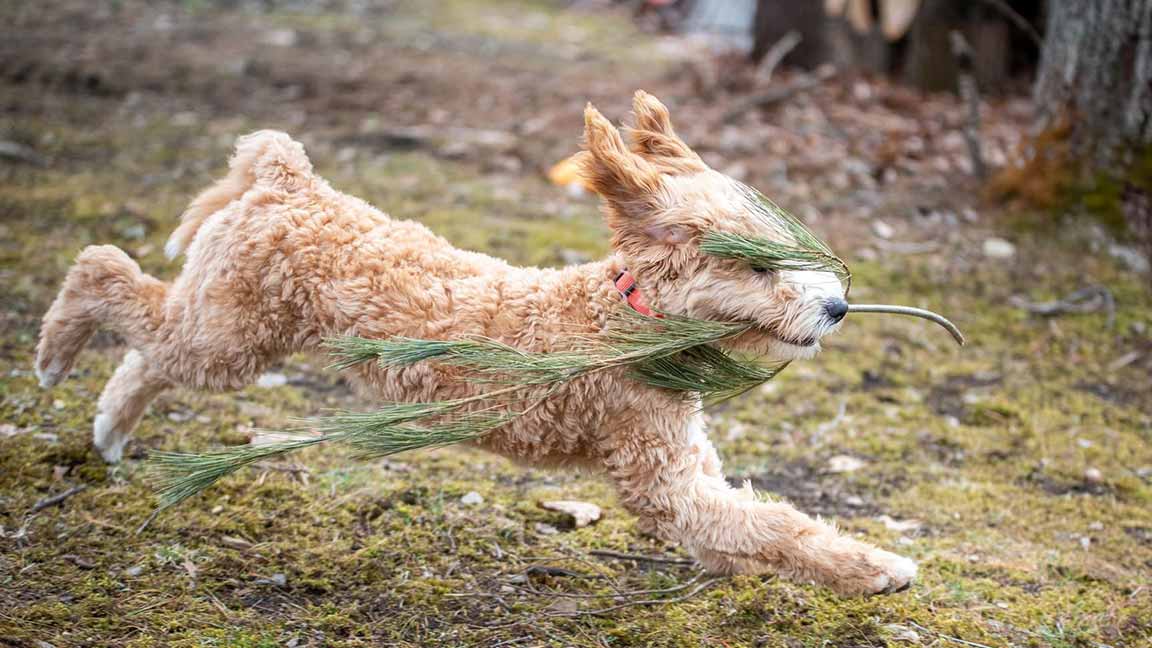
Discovering the Chocolate Goldendoodle
Are you curious about the Chocolate Goldendoodle? This delightful breed has captured the hearts of many, thanks to its charming personality and unique appearance. In this comprehensive guide, we’ll explore everything you need to know about Chocolate Goldendoodles, from their origins to their care requirements. Whether you’re considering adopting one or just want to learn more, this guide will provide valuable insights into this wonderful breed.
What is a Chocolate Goldendoodle?
A Chocolate Goldendoodle is a crossbreed starting with a Poodle and a Golden Retriever, known for its distinctive chocolate-colored coat. These dogs are adored for their friendly demeanor, intelligence, and hypoallergenic qualities, making them a popular choice for families and individuals alike. The Chocolate Goldendoodle combines the best traits of both parent breeds, resulting in a loyal, playful, and versatile companion.
One of the most striking features of the Chocolate Goldendoodle is its coat. The rich, chocolate color is not only beautiful but also relatively rare, making these dogs stand out in a crowd. Their coats can be wavy or curly, depending on their genetic makeup, and they often inherit the low-shedding quality of the Poodle, making them a great choice for people with allergies.

The Origin of Chocolate Goldendoodles
The Chocolate Goldendoodle originated from the desire to combine the best traits of Poodles and Golden Retrievers. Breeders aimed to create a dog that not only had the intelligence and hypoallergenic coat of the Poodle but also the friendly and loyal nature of the Golden Retriever. The result is a versatile and lovable companion that has become a favorite in many households.
The first Goldendoodles were bred in the 1990s, with the chocolate variant becoming increasingly popular in recent years. Breeders carefully select the rich chocolate color, which is a result of specific genetic combinations. This selective breeding ensures that Chocolate Goldendoodles not only have the desired coat color but also inherit the best qualities of both parent breeds.
Historically, the motivation behind breeding Goldendoodles was to create a guide dog suitable for individuals with allergies. The success of this breeding project led to the development of various Goldendoodle types, with the chocolate variant gaining particular attention for its unique and appealing appearance.
Appearance of Chocolate Goldendoodles
Chocolate Goldendoodles boast a rich, chocolate-colored coat that can range from wavy to curly. Their size varies depending on whether they are a standard, medium, miniature, or petite variety. Typically, they weigh between 15 to 90 pounds and stand about 13 to 24 inches tall at the shoulder.
Their coat texture can vary significantly, from straight to loose waves to tight curls, and requires regular grooming to prevent matting. The chocolate color can also come in various shades, from deep, dark chocolate to lighter, milk chocolate tones. This variety in appearance adds to the breed’s charm and appeal.
In addition to their beautiful coats, Chocolate Goldendoodles have expressive eyes that can range from deep brown to amber. Their ears are floppy and covered in soft fur, adding to their overall endearing look. These physical characteristics, combined with their friendly and approachable demeanor, make them an instant favorite among dog lovers.
Personality and Temperament
Known for their friendly and affectionate nature, Chocolate Goldendoodles make excellent family pets. They are highly social and enjoy spending time with their human companions. Their intelligence makes them easy to train, and their playful demeanor ensures they are always up for a game of fetch or a walk in the park.
These dogs are known to be particularly good with children and other pets, making them ideal for families. Their gentle and patient nature allows them to adapt well to various household dynamics. However, their social nature also means they can suffer from separation anxiety if left alone for extended periods.
Their temperament is one of their most appealing traits. Chocolate Goldendoodles are known for being loyal and highly intelligent, often forming strong bonds with their owners. They are also very adaptable and can thrive in various living situations, whether it’s a bustling city apartment or a quiet suburban home. Their playful and curious nature means they enjoy exploring their surroundings and engaging in new activities.
Health and Care
Like all breeds, Chocolate Goldendoodles are prone to certain health issues. Common problems include hip dysplasia, ear infections, and allergies. Pre-breeding genetic testing, regular vet check-ups, a balanced diet, and proper grooming can help maintain their health. Their coat requires regular brushing to prevent matting and occasional trims to keep it manageable.
Ensuring they receive regular exercise is crucial to prevent obesity, which can exacerbate health issues like hip dysplasia. Dental care is also important, as Goldendoodles, like most breeds, can be prone to periodontal disease. Regular brushing of their teeth and providing dental chews can help maintain their oral health.
It’s also important to monitor their ears for signs of infection, as their floppy ears can trap moisture and debris. Regular cleaning with a high quality and natural solution can help prevent infections. Additionally, keeping up with vaccinations and preventive treatments for parasites like fleas and ticks is essential for their overall well-being.
Training a Chocolate Goldendoodle
Training a Chocolate Goldendoodle is usually a rewarding experience due to their eagerness to please and intelligence. Start with basic obedience commands such as sit, stay, and come. These foundational commands are essential for establishing good behavior and communication between you and your dog.
Positive reinforcement techniques work best with this breed. Use treats, praise, and play to reward your Goldendoodle for good behavior. Consistency is key, so make sure everyone in the household follows the same training guidelines. Socialization is also important; expose your puppy to different environments, people, and other animals to ensure they grow up to be well-adjusted and confident.
Advanced training can include agility exercises, trick training, and advanced obedience. Given their intelligence and enthusiasm, Chocolate Goldendoodles often excel in these areas. Enrolling in a local obedience class or hiring a professional trainer can provide additional guidance and structure.
Nutrition for Chocolate Goldendoodles
Proper nutrition is crucial for maintaining the health and vitality of your Chocolate Goldendoodle. A diet rich in high-quality proteins, healthy fats, and essential vitamins and minerals is recommended. Consult your breeder or veterinarian to determine the best feeding schedule and portion sizes for your dog’s specific needs.
When choosing dog food, look for products that list meat as the first ingredient and avoid those with fillers like corn, gluten, and soy or by-products of any kind. Incorporating a mix of dry kibble and freeze dried raw food can provide a balanced diet. Additionally, some owners opt for a homemade raw food diet, which can be beneficial but requires careful planning to ensure nutritional balance.
Supplementing your dog’s diet with omega-3 fatty acids can promote a healthy coat and skin, while glucosamine and chondroitin supplements can support joint health, particularly important for preventing hip dysplasia. Always ensure your dog has access to fresh, clean water to stay hydrated.
Why Choose a Chocolate Goldendoodle?
There are countless reasons to choose a Chocolate Goldendoodle as your next pet. Their hypoallergenic coat makes them suitable for allergy sufferers, while their friendly and adaptable nature ensures they fit well into various living situations. Many owners share heartwarming stories of how their Goldendoodles have brought joy and companionship into their lives.
For example, Sarah, a mother of two, recounts how her Chocolate Goldendoodle, Max, has become an integral part of her family. “Max is not just a pet; he’s part of our family. He’s incredibly gentle with the kids and always knows how to cheer us up. We can’t imagine life without him.”
The breed’s intelligence and eagerness to please make them highly trainable, which is particularly beneficial for first-time dog owners. Their affectionate nature means they quickly become a beloved member of the family. Real-life examples of owners who have experienced significant improvements in their quality of life thanks to their Chocolate Goldendoodle further highlight the breed’s appeal.
Potential Challenges
While Chocolate Goldendoodles are generally easygoing, they can present some challenges. Their moderate to high energy levels require regular exercise, and their intelligence means they need mental stimulation to prevent boredom. Additionally, their grooming needs can be demanding. However, with the right approach and commitment, these challenges can be easily managed.
For instance, providing a variety of toys and engaging in interactive play can help keep them mentally stimulated. Regular walks, runs, or play sessions in the yard are essential to burn off their energy. Understanding and preparing for these needs can ensure a happy and harmonious relationship with your Chocolate Goldendoodle.
It’s also important to be aware of potential behavioral issues. Without proper training and socialization, Chocolate Goldendoodles can develop habits such as excessive barking, digging, or chewing. Addressing these behaviors early with consistent training and positive reinforcement can prevent them from becoming problematic.
How to Find a Reputable Breeder
Finding a reputable breeder is essential to ensure you get a healthy and well-adjusted Chocolate Goldendoodle. Look for breeders who prioritize health testing, provide a clean and nurturing environment, and are transparent about their breeding practices. Avoid breeders who are unwilling to answer your questions or who offer multiple breeds without specialization. Fox Creek Farm Goldendoodles and Bernedoodles offers healthy breeds specialized in breeding doodles.
A good breeder will conduct health screenings for common genetic conditions and will provide you with documentation of these tests. Visiting the breeder’s facility is not recommended. It can spread diseases to puppies before they are old enough to be vaccinated. Reputable breeders are also more likely to offer ongoing support and guidance as you raise your Goldendoodle but are still aware of the risks possible to these furry friends.
It’s also beneficial to seek recommendations from other Goldendoodle owners or veterinary professionals. Online reviews and breed-specific forums can also provide valuable insights into the reputation and practices of different breeders.
Frequently Asked Questions (FAQ)
- What is the lifespan of a Chocolate Goldendoodle?
Chocolate Goldendoodles typically live between 10 to 15 years, depending on their overall health, size, and care. - Are Chocolate Goldendoodles hypoallergenic?
Yes, Chocolate Goldendoodles can be considered hypoallergenic when their breeder utilizes DNA testing to pair dogs with the right genetics, which means they shed less and produce fewer allergens. - How often should I groom my Chocolate Goldendoodle?
Regular grooming is essential. Brush your Goldendoodle’s coat several times a week and schedule professional grooming every 6 to 8 weeks. - What are common health issues in Chocolate Goldendoodles?
Common health issues include hip dysplasia, ear infections, and allergies. Regular vet check-ups can help catch and manage these conditions early. Responsible pre-breeding DNA and OFA testing can help avoid many health conditions. - How much exercise does a Chocolate Goldendoodle need?
Chocolate Goldendoodles require daily exercise, including walks, playtime, and mental stimulation, to keep them happy and healthy.






